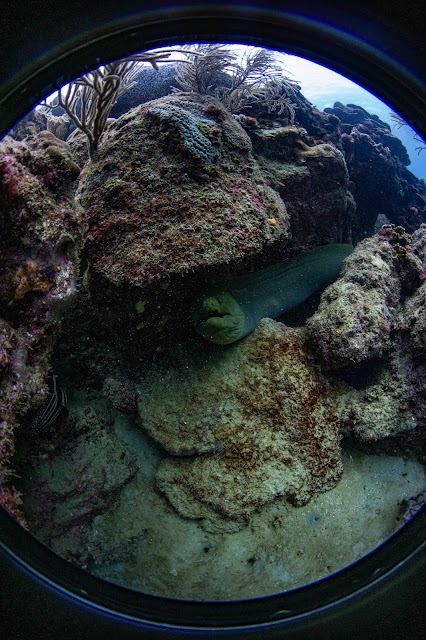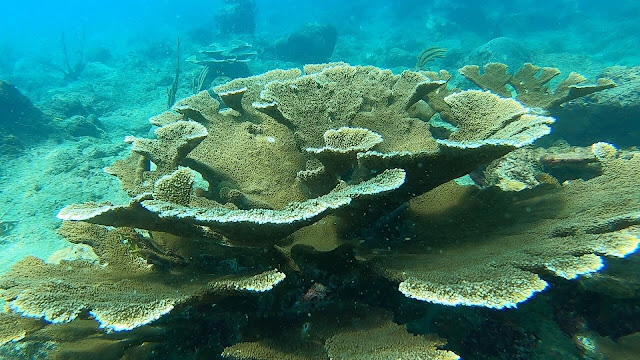The High Seas Treaty now in force
Dr Anjani Ganase discusses the latest news in marine science; the High Seas Treaty, the Ocean Census and the impact of large rivers on tropical storms.
The High Seas Treaty (known fully as the Agreement on the Conservation and Sustainable Use of Marine Biological Diversity of Areas Beyond National Jurisdiction, BBNJ) has been ratified by 60 countries with Morocco being the 60th country to ratify on September 19, 2025. The Treaty will officially enter into force within 120 days.
The High Seas Treaty will fill the critical gap in regulation of the ocean beyond countries’ national jurisdictions (BBNJ). This area makes up two-thirds of the ocean that must be managed for marine biodiversity and climate regulation. The treaty has four main focus areas. The first is Area-Based Management Tools, including Marine Protected Areas, which provides a mechanism for establishing and managing MPAs on the high seas. (2) Marine Genetic Resources provides a framework for fair allocation of benefits from the discovery of commercially viable genetic resources discovered in the high seas, to be used in biotechnology and pharmaceuticals. (3) Capacity Building and Transfer of Marine Technology indicates that there should be fair transfer of knowledge to developing nations for the purpose of conservation and sustainable use. (4) Environmental Impact Assessments mandates the use of international standards for assessing environmental impacts for extractive activities such as deep-sea mining, in order to ensure a transparent process.
The next step will be outlining the steps towards implementation with discussion to take place at the first COP BBNJ, which will take place one year after the Treaty enters into force.
Trinidad and Tobago has yet to sign and ratify the High Seas Treaty.

Charlotteville coastal community in
action. Photo by Anjani Ganase
The Ocean Census
A global collaboration known as the Ocean Census seeks to accelerate the process of discovery of new ocean species. The discovery and confirmation process can typically take more than decade; species identification is a slow and arduous process that requires taxonomic and genetic analysis and peer review. Ocean Census seeks to shorten the process by providing the technological and expert capacities of the taxonomic process and expert review. Ocean Census has established an Ocean Census Biodiversity data platform, which is an open access platform to assist in the identification of specimens.

Pygmy pipehorse. Credit: The
Nippon Foundation-Nekton Ocean Census/ Richard Smith, 2025.
Why is this important and urgent? To date, we have only explored ten percent of
the ocean, yet we are heavily extracting from the seas and seabed at alarming
rates without an understanding of what marine life and habitats exist far less
the impacts of their loss. Knowledge of our ocean biodiversity is needed for
broader understanding of the ecosystems that occur in the ocean and their
services to us and the planet. It will inform regulations and protection. The
project was launched by the Nippon Foundation in 2023 with an ambitious goal of
10,000 species over the next decade. Currently, they’ve helped identify over
850 species including the Guitar Shark discovered off the coasts of Mozambique
and Tanzania, the Pygmy Pipehorse from South Africa, and a sea star thriving on
the Jøtul hydrothermal vents near Svalbard.

Hurricane Idalia over Florida.
Photo courtesy National Oceanic and Atmospheric Administration (NOAA)
Large Rivers and Tropical Storms
In the summer of 2023, Hurricane Idalia intensified from a Category 1 to Category 4, in the Gulf of Mexico, just before making landfall along Florida’s west coast. While the 2023 marine heat wave had generated a large area of water in the Gulf of Mexico with surface water temperature above 29 C extending down to 30 m, it is not the only culprit for the rapid storm intensification. Researchers from the University of South Florida, through the modelling and ocean observations of Hurricane Idalia, discovered that large river plumes (bodies of freshwater) can also contribute to storm intensification.
Storm strength is typically a factor of the ocean’s heat content – sea surface temperatures that result in stratification in the water column where there is little mixing. This results in warm air development over the ocean’s surface leading to storm formation. It was assessed that the stratification is also maintained by the difference in salinity. Where warm fresh water sits on the surface, this contributes to collecting warmer surface waters and the intensification of storms. In 2023, the Gulf of Mexico had an extensive fresh water plume that extended from the Mississippi River east to the Florida panhandle and south to the Florida Keys. The layer of freshwater water extended down to 20 m, with warm surface temperatures and low salinities, it was revealed that freshwater outflows need to be co-factored into storm forecasting in the future. The study supported a number of previous studies that linked category 5 hurricane development in the Atlantic Ocean to the outflow of Amazon and the Orinoco Rivers, and also confirmed studies of Typhoons in Asia.

Hammerhead sharks, Yonaguni, Japan.
Credit: Masayuki Agawa / Ocean Image Bank
Longer life near the ocean
A study in the USA that surveyed over 66,000 people nationwide found that life expectancy was above average for people living in small communities and rural areas adjacent to the coast. The opposite was true for highly populated cities whether coastal or located inland close to rivers. Rural areas adjacent to inland water bodies also showed benefits to life expectancy. Researchers from the Ohio State University related these findings to a number of environmental and social factors, such as low air pollution, and low chance of environmental extremes, such as heat waves and drought, as well as a higher chance of recreational, outdoor activities for fitness, and higher income levels. A critical factor is the lower number of high temperature and low temperature days, essentially mild weather conditions, and therefore a lower risk of extreme temperature and weather-related illnesses and mortality. This study gives insight into the need for blue spaces in urban planning and development.
References:
Cao, Yanni, Ria Martins, and Jianyong Wu. "Unveiling complexity in blue spaces and life expectancy." Environmental Research (2025): 121981.
Shi, Jing, et al. "Intensification of Hurricane Idalia by a river plume in the eastern Gulf of Mexico." Environmental Research Letters 20.2 (2025): 024050.
https://www.wri.org/insights/high-seas-treaty-explainer
https://www.unep-wcmc.org/en/news/over-850-new-marine-species-discovered-by-the-ocean-census


